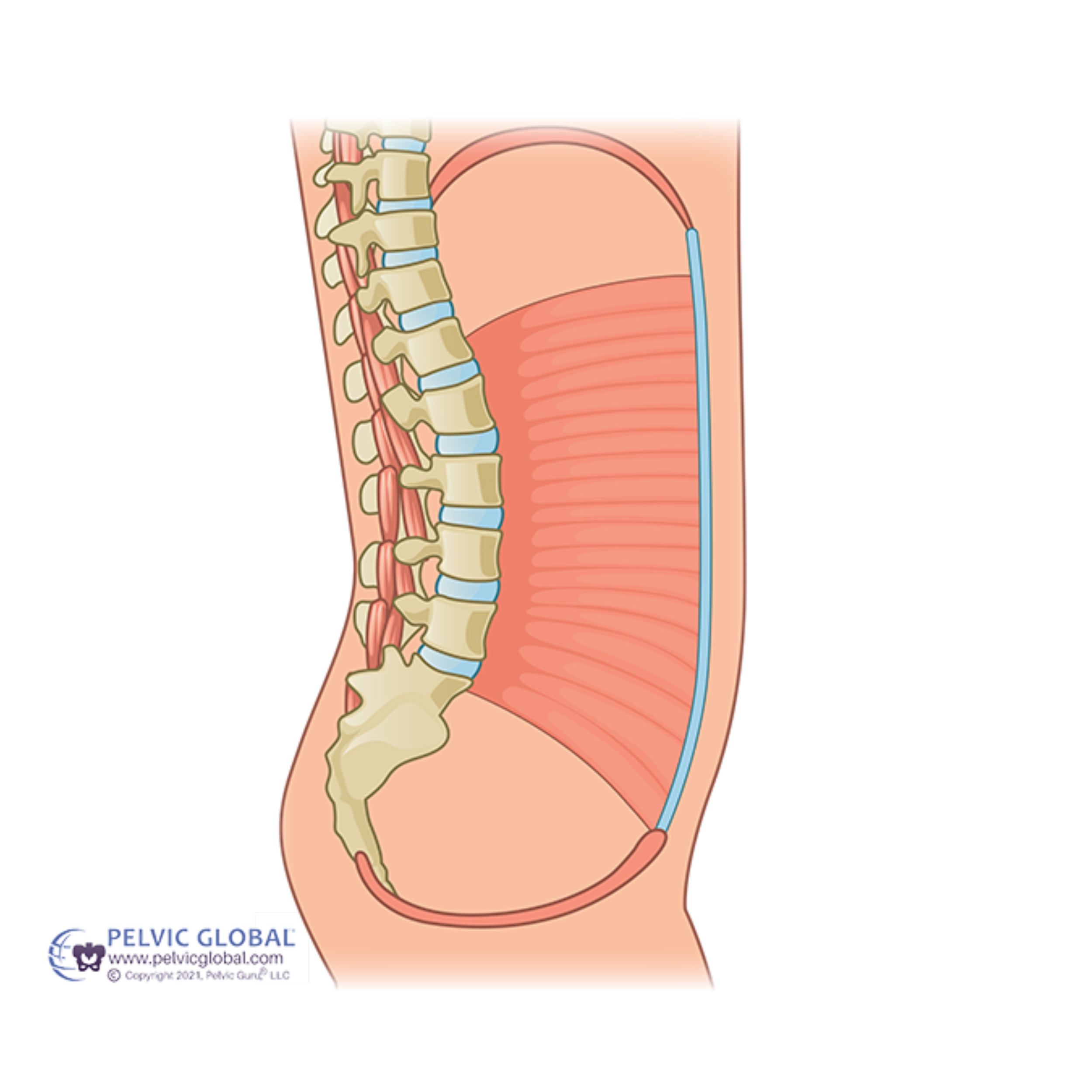The Pelvic Floor
The pelvic floor (aka pelvic diaphragm) is a group of muscles at the bottom of the pelvis. These muscles have several very important jobs. They help control urination and defecation, allowing us to choose when and where we go to the bathroom. They help support our pelvic organs, especially when we jump or sneeze. They also help support our spine, especially when we walk, run or stand on one leg.
The pelvis (or pelvic girdle) is a ring of bones that is below our belly button and above our thighs
We sometimes refer to the top part as our hip bones, and the bottom part as our sitz bones
The deepest layer of the pelvic floor creates a hammock or a bowel that extends from the pubic bone in the front to the tailbone in the back
As infants, we did not have voluntary control of urination or defecation. These things happened automatically. Our bladder would empty automatically when it was full and our bowels would empty automatically, usually after eating.
Around 2 years old, we develop a reflex that helps us delay or postpone long enough to get to the toilet. The urge to empty the bladder or the bowel, still happens automatically, but by contracting the pelvic floor muscles, we are able to send a message to both the bladder and the bowel to slow down. This slowing down combined with the pelvic floor muscles ability to close the openings for the bladder and the bowel, allow us to have control over when and where we pee or poop
When we cough, sneeze, laugh or jump, the pressure in our abdomen increases, pushing downward on our pelvic organs. Normally the pelvic floor muscles contract automatically to keep our bladder and other organs well supported. Sometimes after injury, illness or childbirth, this automatic contraction does not work as efficiently as it should, which can lead to pelvic organ prolapse or incontinence with sneezing or exercise. Luckily, the pelvic floor responds to exercise like every other muscle in the body. If we practice the right exercises at the right intensity, we can improve the strength, endurance, and coordination of these muscles
Core Stability
The pelvic floor coordinates with the deep abdominals and the deep back muscles to support the spine
The pelvic floor, together with the deep abdominals and the deep back muscles are the primary stabilizers of the spine and pelvis. They help to support the core of the body when we walk, run or lift things. It is essential for these muscles to coordinate together to keep the spine strong and supported and to prevent injury. Exercising without good core stability is like trying to build a house on top of quick sand.
Good core stability does not mean that these muscles are contracting with full force all the time. Good stability means that these muscles are able to easily change and adjust so they are contracting just the right amount to keep the spine supported while also allowing the spine to twist or bend when it needs to.
The pelvic floor does a lot of work for such an under appreciated part of the body. If you want to learn more and get to know your pelvic floor better, schedule a quick call to learn how pelvic physical therapy may help you.



